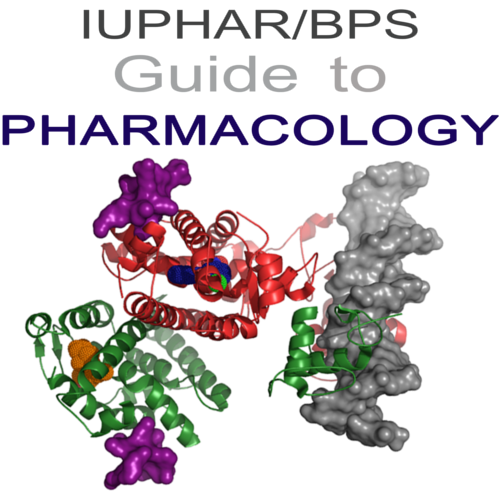Class Frizzled GPCRs in GtoPdb v.2023.1
Abstract
Receptors of the Class Frizzled (FZD, nomenclature as agreed by the NC-IUPHAR subcommittee on the Class Frizzled GPCRs [180]), are GPCRs originally identified in Drosophila [20], which are highly conserved across species. While SMO shows structural resemblance to the 10 FZDs, it is functionally separated as it is involved in the Hedgehog signaling pathway [180]. SMO exerts its effects by activating heterotrimeric G proteins or stabilization of GLI by sequestering catalytic PKA subunits [186, 6, 58]. While SMO itself is bound by sterols and oxysterols [27, 94], FZDs are activated by WNTs, which are cysteine-rich lipoglycoproteins with fundamental functions in ontogeny and tissue homeostasis. FZD signalling was initially divided into two pathways, being either dependent on the accumulation of the transcription regulator β-catenin or being β-catenin-independent (often referred to as canonical vs. non-canonical WNT/FZD signalling, respectively). WNT stimulation of FZDs can, in cooperation with the low density lipoprotein receptors LRP5 (O75197) and LRP6 (O75581), lead to the inhibition of a constitutively active destruction complex, which results in the accumulation of β-catenin and subsequently its translocation to the nucleus. β-catenin, in turn, modifies gene transcription by interacting with TCF/LEF transcription factors. WNT/β-catenin-dependent signalling can also be activated by FZD subtype-specific WNT surrogates [138]. β-catenin-independent FZD signalling is far more complex with regard to the diversity of the activated pathways. WNT/FZD signalling can lead to the activation of heterotrimeric G proteins [34, 183, 155], the elevation of intracellular calcium [189], activation of cGMP-specific PDE6 [2] and elevation of cAMP as well as RAC-1, JNK, Rho and Rho kinase signalling [57]. Novel resonance energy transfer-based tools have allowed the study of the GPCR-like nature of FZDs in greater detail. Upon ligand stimulation, FZDs undergo conformational changes and signal via heterotrimeric G proteins [244, 245, 107, 179, 104]. Furthermore, the phosphoprotein Dishevelled constitutes a key player in WNT/FZD signalling towards planar-cell-polarity-like pathways. Importantly, FZDs exist in at least two distinct conformational states that regulate pathway selection [245]. As with other GPCRs, members of the Frizzled family are functionally dependent on the arrestin scaffolding protein for internalization [23], as well as for β-catenin-dependent [14] and -independent [91, 15] signalling. The pattern of cell signalling is complicated by the presence of additional ligands, which can enhance or inhibit FZD signalling (secreted Frizzled-related proteins (sFRP), Wnt-inhibitory factor (WIF), sclerostin or Dickkopf (DKK)), as well as modulatory (co)-receptors with Ryk, ROR1, ROR2 and Kremen, which may also function as independent signalling proteins.

This work is licensed under a Creative Commons Attribution-ShareAlike 4.0 International License.










